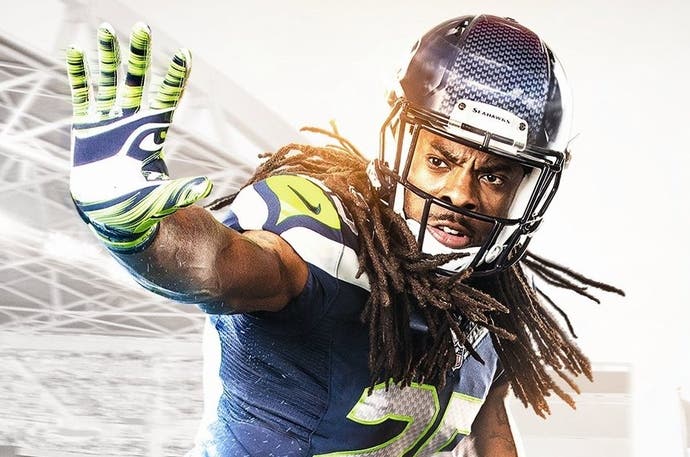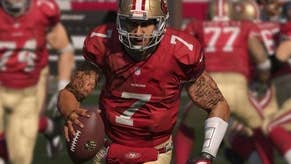Madden NFL 15 review
Far from the Manning crowd.
Madden NFL 15's intro is a sight to behold. Presented with that particular tone of intense, hackneyed masculinity that's fallen out of fashion outside the sport of American football, the sequence works as an accurate barometer for your satisfaction of what's to come. Enjoy it and you'll love Madden 15; despise it and this is not for you.
The reason for that stark differentiation comes down to what Madden has, once again, chosen to focus on. As with previous games in the series, there's an incredible emphasis on speed, creating a playing experience that only partially replicates what you see from the NFL on Sundays.
All the big plays and the boisterous excitement they bring are here - and are a joy to execute. In the game's dedication to getting you to those primetime moments, however, much of the subtlety of this complex team sport tends to get lost in the pomp.
This is most obviously felt when switching between different quarterbacks. Peyton Manning is one of the most revered players of all time; he will go down in history not only as a sportsman of immense talent but as one of the hallowed few responsible for changing the way we think about the quarterback position. While his throwing ability in Madden 15 is beyond reproach, his lack of speed makes him a liability in a way you'd never associate with his real-life self.
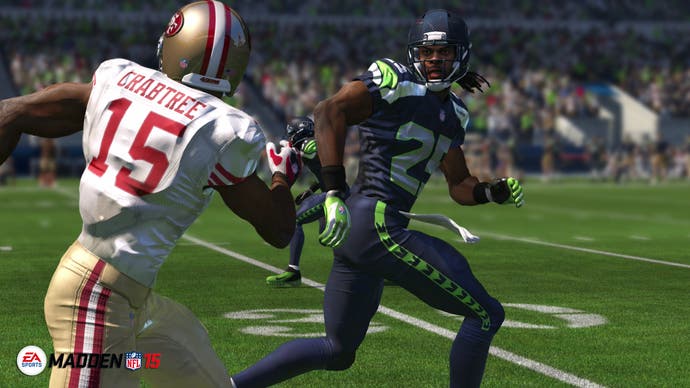
He simply cannot avoid the pressure of rushing linebackers and defensive ends in the game, a ridiculous turn of events given his actual ability to intelligently avoid the rush. This kind of brain-over-brawn football ability is in no way recreated in Madden 15, preventing Peyton Manning from feeling like Peyton Manning.
For the sheer range of options he provides at the quarterback position, the Washington Redskins' Robert Griffin III is a superior option to Manning. Simply writing that line makes me feel like I've committed a sin. Griffin is nowhere close to Manning in reality and he never will be, but he does have the speed to avoid defenders and keep plays alive.
Given how glaringly obvious the dominance of speed has been for so many years in Madden games, you would have thought the design team would have fixed it by now. Clearly, they don't want to. This comes back to that intro; this is very much a game aimed at those looking for the thrill of gameday. It's not a simulator and it's not aimed at the American football elitist - not that there is an alternative game to turn to.
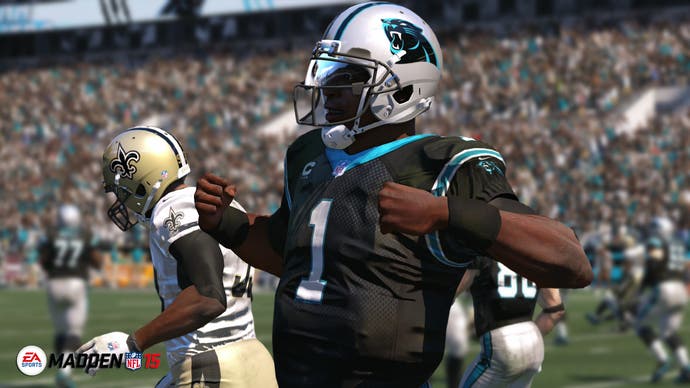
That's not to say that horizons haven't been broadened since last year's confusingly titled and stagnantly designed Madden NFL 25. Undoubtedly, Madden 15 is a superior prospect and in many ways is the game we should have been offered last season, given the opportunities then first presented by the Xbox One and PS4 hardware.
Playing on defense, for instance, is a task only now worth engaging with. For the first time ever in a Madden game, your individual actions while defending actually matter - from where you decide to position the player you're in control of, to when you decide to react to the snap, to how quickly you are able to read the motion and intent of your opponent's play-by-play gameplan.
Much of this impact is achieved by simply allowing you to move the camera behind your own defensive players, mirroring the angle you use while on offense. The rest comes from you having to rely less on the AI to make things happen for you, a change of tack most welcomingly felt during online matches against players good enough to befuddle the game's algorithms at will.
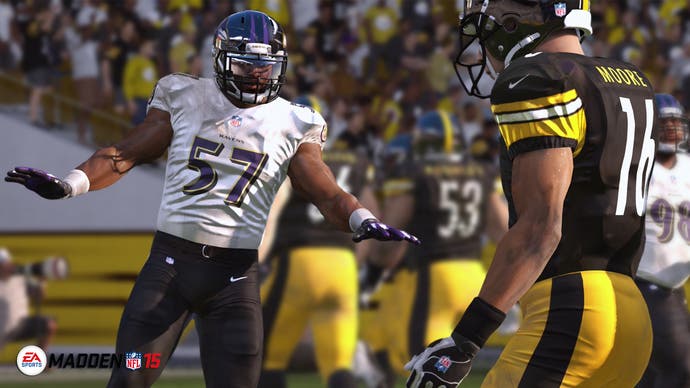
The New York Giants are not the defensive powerhouses they used to be, but defensive end Jason Pierre-Paul still has the singular ability - when under your control - to wreak havoc across offensive lines. This is thanks to a new control scheme that puts all of his actions under your direct control; no longer are the winners and losers of individual battles determined by disenchanting dice rolls influenced by the players' stats.
Pressing the trigger as soon as the offense has snapped the ball allows you to launch quickly off the line of scrimmage; time it perfectly and you give yourself a chance to catch your opposing guard flatfooted, breezing past him and straight into the quarterback's face. If you do get blocked, then the face buttons perform power and finesse moves to get past your nemesis, while the left stick allows you to push them out of the way to give a teammate more space to burst past. Similarly detailed actions exist for linebackers and cornerbacks, too, the defensive position you decide to take up likely coming down to which player is your favourite.
Welcome as they are, these new defensive abilities still primarily revolve around speed. Faster defenders can recover more quickly from mistakes, cover more of the field and block gaps in the lines more readily. There are bigger, slower defenders that boast better tackling attributes, but tackles miss so infrequently that it makes little sense to select them. Choosing a mediocre tackler with a 90-plus speed attribute will see greater success than a tackling machine with sub-80 speed. Again, this generally stands at odds with the reality of the NFL.

Much closer to reality are the tweaks made to how, and what, information is presented within games. The new 'Coach Stick' (an idea borrowed from the seemingly defunct NCAA college football series) offers a basic review of how your receivers and running back match up against their respective defenders. A traffic light system communicates whether a particular battle is favourable, middling or bad for you - this information potentially influencing your likelihood of throwing risky passes. If the matchup is favourable, for instance, you might be more inclined to throw a 50/50 pass in the hope that your superior receiver will live up to his billing.
Additionally, suggestions on which play to run make more sense for each given situation and, perhaps most importantly, manually trailing through the various formations to pick a specific play is less of a chore thanks to a more intuitive menu design. It's taken a very long while, but all the information you'd reasonably expect to be clearly shown in an American football game is finally being delivered in a way that works.
Despite of all these steps forward, it's impossible to shake the feeling that this is the game we should have been playing last year. Many of the ideas on offer are promising rather than fully realised, making Madden 15 more a blueprint for the future than the finished article. That's exactly what the first next-gen outing should have been; this second edition should then have built on and deepened the new ideas.
Madden 15 a step forward, then, yet still a year behind schedule. There's a good game here, but there's still work to do to bring it up to the level of many of its sports game peers.
